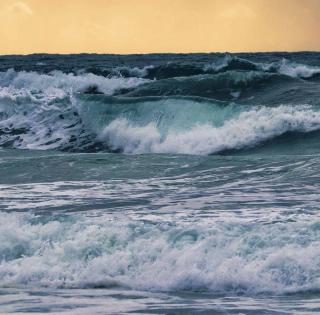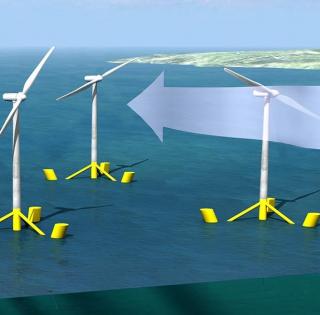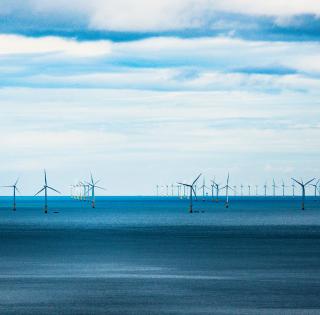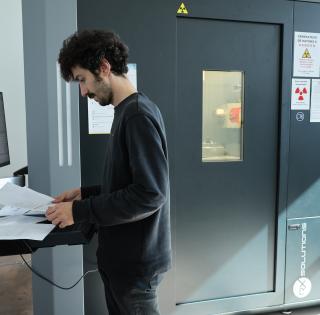

For several years now, Chantiers de l’Atlantique has been working on Silenseas, a sailing cruise vessel. To assist the shipbuilder in this task, the mechanical sciences research team at ENSTA Bretagne (Dupuy de Lôme Research Institute) conducted a two-year study aimed at modeling the design of 100% composite rigid sails.
Named SOLID SAIL 2.0, this program has been carried out with companies that will develop and produce the rigid sails. ENSTA Bretagne has designed and tested a computational chain factoring in the expected traction performances and wind behavior, on a 1:5 scale prototype. This first phase is reaching completion to make way for a new program for finalizing the digital design tools at real-world scale, with even more parameters taken on board.
The aim of SOLID SAIL 2.0 is to install composite rigid sails, which are easy to haul up and down, on large cruise liners. This unprecedented project is part of a larger program, overseen by Chantiers de l’Atlantique, which has been working for several years now on Silenseas, a sailing cruise vessel.
To assist Chantiers de l’Atlantique with the development of the SOLID SAIL 2.0 rigid sails, a four-partner consortium was set up in 2018. This brings together the ENSTA Bretagne research team ("structures, fluids & interactions" team of the Dupuy de Lôme Research Institute lab) and three companies (Chantiers de l’Atlantique, G-Sea Design and Multiplast). The contributions of five subcontractors (Awentech, Capacités SAS, Incidence, Mer Vent, Ocean Data System) have also been instrumental in the success of the consortium’s efforts.
The SOLID SAIL 2.0 program has received accreditation from two clusters, EMC2 and the Pôle Mer Bretagne Atlantique, and joint funding from Europe and the Brittany Region.
ENSTA Bretagne: from coding to the final modeling, with a testing stage along the way
This consortium is benefiting from ENSTA Bretagne’s skills and experience in testing as well as extensive expertise on the subject of fluid-structure interactions. Thanks to such high-level skills, the harsh conditions endured by the rigid panels making up the sail can be modeled in a bid to predict the deformations and propulsion effects. On the basis of such predictive modeling of the rigid sail’s performances, it will then be possible to design the most appropriate set of sails for propelling Silenseas.
For the project to succeed, the digital design modeling must contain a Fluid-Structure computational chain allowing for a detailed sizing of the composite (i.e. to determine its thickness and the fiber direction), and determine the sail geometry, the number of panels and the geometry of the panels themselves,
explains Alain Nême, lecturer and coordinator of the SOLID SAIL 2.0 project at ENSTA Bretagne.
After writing the first computing codes in the lab, tests were performed, both at ENSTA Bretagne and in Pornichet, on a 1:5 scale composite rigid sail prototype, according to the concept patented by Chantiers de l’Atlantique. The behavior of the rigid sail, particularly the sail tension and deformation phenomena, were measured and compared against the initial calculations, with a view to ending up with an initial digital prediction model.
In October 2020, the findings of this research, initiated in 2018, were published in the international journal “Ocean Engineering”.
JIB SEA, a second research program
A second research program is following on from SOLID SAIL 2.0, dubbed JIB SEA. Once again closely involving ENSTA Bretagne, it is setting out to develop the design model of the rigid sail at a 1:1 scale, with account taken of such additional parameters as the influence of the headsail on the stresses travelling through all of the mainsail panels or UV aging and endurance under cyclic loading of the mainsail. This second program will take place over 18 months, with completion scheduled in December 2021.
This new stage once again highlights the expertise of the mechanical sciences research team at the engineering school and the Dupuy de Lôme Research Institute to which it belongs (CNRS joint research unit 6027). The latter has already rose to prominence for developing innovative marine solutions including the modeling of giant kite sails capable of towing large vessels.

Equipe de recherche Solid Sail 2.0 (de gauche à droite)
Christian Jochum, enseignant-chercheur en matériaux composites
Frédéric Montel, ingénieur centre d'essais MASMECA
Matthieu Sacher, enseignant-chercheur en hydrodynamique navale
Raphaël Poncin, technicien centre d'essais MASMECA
Didier Penchenat, technicien centre d'essais MASMECA
Antoine Morvan, post-doctorant
Jean-Baptiste Leroux, enseignant-chercheur en hydrodynamique navale
Alain Nême, enseignant-chercheur en mécanique des structures.





















